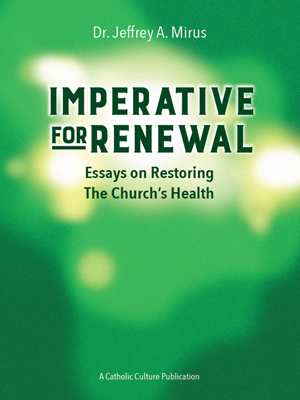Jesuits in 18th Century Tibet
By Dr. Jeff Mirus ( bio - articles - email ) | Dec 14, 2009 | In Reviews
I’ve just finished what is, for a work of modern scholarship, an unusually interesting book, Trent Pomplun’s Jesuit on the Roof of the World: Ippolito Desideri’s Mission to Tibet. Pomplun is Associate Professor of Theology at Loyola University Maryland. His book tells the story of an 18th century Jesuit who undertook a bold mission to Tibet, quarreled over the mission territory with Capuchin competitors, wrote works in Tibetan to refute the doctrine of reincarnation, and gave us an account of his travel and work in Tibet which provides some of the earliest and most complete historical data we have on that region.
Being a scholarly work, this won’t be for everyone. But the book opens important windows on the following interesting topics: (1) The nature of Jesuit novice and missionary training in the 18th century; (2) The religion, politics and culture of 18th century Tibet; (3) Catholic attitudes toward Tibetan religion in this period; (4) The challenge of refuting the Tibetan doctrines of nothingness and reincarnation; (5) The missionary conflicts among different religious orders, particularly Jesuits and Capuchins; and, in particular, (6) The problem of Jesuit “accommodationism”, which is a form of Christian adaptation to the religious beliefs, customs, and rituals of the people whose conversion a Jesuit mission has in view.
For a serious Catholic outside the community of Jesuit and Tibetan scholars, the topic most relevant to problems still haunting the Church today is the last—the question of Jesuit accommodationism, which still raises significant concerns among observers of Jesuit work in the East today. In addition, those skeptical of the enormous regard so often felt by contemporary Westerners for the Dalai Lama will be interested in the extensive 18th century evidence for political control and manipulation of and by the Dalai Lama, including the ruthless use of the Tibetan belief in reincarnation to secure position and power.
Because Pomplun’s study is part theology, part history and part travelogue—that is, it seeks to capture Fr. Ippolito Desideri’s contributions and observations in all three areas—and because it deals with Tibet, which continues to be an object of fascination in the West even today, Jesuit on the Roof of the World has a number of “hooks” to draw the reader into the narrative. Moreover, Pomplun is clearly sympathetic to Catholicism; in fact his careful and accurate handling of Catholic controversies suggests that he not only knows Catholicism well from the inside, but shares the Catholic Faith himself, though I have not been able to verify this guess. In any case, the serious Catholic reader will find himself in good hands when it comes to sifting through Catholic judgments on Tibetan spirituality, conflicts among the different orders, the problem of accommodationism itself, or even some of the prejudices of other modern scholars.
At the same time, Pomplun is not Belloc. Again, this is a scholarly work, directed primarily toward an academic audience, and as such, in order to ensure that the work will not be dismissed as partisan, the author uses certain self-distancing devices which are common to believing scholars in the too-often foreign land of academe. The chief among these is Pomplun’s framing of Desideri’s quest for Tibet in terms of “phantasm” and “imagination”, which will sound odd to more frankly Catholic ears, but which is really cleverly acceptable because these ideas are drawn right out of the classic Jesuit spiritual formation which Desideri received. For, as most readers may know, Jesuit formation makes an almost Herculean use of the imagination. In this sense, Pomplun demonstrates one of the legitimate modes of survival for Christians in the contemporary academy, and that itself is not without a certain interest.
Again, this book probably isn’t for you unless you’re a fairly intellectual type with some academic experience. But if you fit this category, I can recommend Jesuit on the Roof of the World, especially if you are interested in any of the primary issues enumerated above. Personally, I love stories of travel to distant and little-known places, and I am both fascinated and instructed by the theological issues—and the all too human quarrels—that animated the 18th century Catholic missionary world.
[Trent Pomplun, Jesuit on the Roof of the World (Oxford University Press, New York, 2010, but now available) 302 pp. including extensive notes, bibliography and index.]
All comments are moderated. To lighten our editing burden, only current donors are allowed to Sound Off. If you are a current donor, log in to see the comment form; otherwise please support our work, and Sound Off!









